Bodhi leaf decorated with terracotta phoenix and three-metal inlaid knife
The Bodhi leaf decorated with a phoenix from the Ly Dynasty, Thang Long Imperial Citadel, consists of two parts: the stem and the pedestal. The stem of the Bodhi leaf consists of a stem and leaves, the stem has been lost, the leaves are shaped like half of a Bodhi tree leaf, split lengthwise from the top to the stem. Both sides are decorated with phoenixes dancing on flowers and leaves.
The Ly Dynasty terracotta phoenix decoration on the Bodhi leaf in Thang Long Imperial Citadel is the most complete and beautiful version. The design depicts a phoenix dancing on a lotus flower, its head raised high, its two beaks together, one leg bent, the other leg used as a support, creating the feeling of jumping on a background of vines and leaves. The phoenix has a large beak and a large crest facing forward like a peacock's beak and crest; large, round eyes and jaws like a pheasant; long manes on both sides of the jaws curving forward in rhythm with the crest and tail; a high neck like a peacock's neck; wide wings; a round body, and a long tail like a peacock's. The long tail is depicted with many layers, winding up to the top of the Bodhi leaf. The body has no scales but is characterized by very detailed layers of feathers.
The three-metal inlaid sword, Imperial Citadel of Thang Long, consists of two parts: the body and the handle. The handle only has a steel core inside, 18.5cm long, the shield, the hilt and the hilt pin are all lost. The body of the three-metal inlaid sword, Imperial Citadel of Thang Long is 64cm long. The pattern can be divided into 3 parts, from the handle to the tip. The first part, the junction between the body and the handle, is a layout of two layers of lotus petals, between the two layers are sunken lines and dots, creating a feeling of being the background for the next pattern. The second part is decorated with a pattern of leaves, the leaves are turned in a sinusoidal shape according to the rule of white leaves corresponding to yellow leaves. Surrounding the leaf string are thin but clear lines. The third part: The structure is quite complex, including many patterns stretching from the middle of the body of the sword to the tip. The patterns from the middle to the tip include: a human figure pattern shown in a dancing position, with both hands raised above the head as if supporting something; cluster of designs with a large 5-petal flower in the center, vines growing out on both sides and the outermost design is the auspicious cloud pattern.
|
Sword with three-metal inlay from the Tran Dynasty. (Photo: Thang Long Heritage Conservation Center - Hanoi) |
Palace maids' cards entering and leaving the inner palace and architectural model of the Early Le Dynasty
The card is a flat, thin, isosceles trapezoid-shaped copper alloy plate, the two corners of the upper edge of the trapezoid are curved. The card is 12.7cm high; the lower edge is 4.9cm wide. Both sides are engraved with Chinese characters, the engraved strokes are deep and clear. The first side is engraved with 5 characters translated as: Cung nu xuat mai bai. The second side, that is, the back of the card, is engraved with characters translated as (Cung tu ngu hieu”; and (Quang Thuan that nien tu nguyet tao) meaning (April, Quang Thuan 7th year, Le Thanh Tong dynasty, 1466).
The terracotta model of the Le So Dynasty architecture consists of 3 parts: the foundation, the load-bearing column frame and the roof. The Le So Dynasty architectural model of the Thang Long Imperial Citadel is essentially the remaining part of a completed structure. This remaining part includes a part of the roof and a part of the structural frame.
The complete frame includes the column system, beams and the truss system. The architectural model of the Early Le Dynasty, Thang Long Imperial Citadel, has a part of the upper part of the frame remaining, including: column system, beam system; truss system. In which, the column system includes the main column, the military column; the beam system has the following components: the head, the upper beam, the lower beam; The truss system includes the components: the truss, the beam, the square beam and the square beam. The frame is covered with yellow enamel, dark color, often called eel skin enamel. The column system has a total of 16 columns, including 04 large columns, often called the main columns and 12 small columns, often called the porch columns and the military columns. The architecture has a structure of one room, two wings, and rooms. The trusses are square in shape, tapered at the bottom; the outer excess end of the porch beam is decorated with the shape of a dragon's head, a mouth holding a pearl, a jar with a tongue. The complete roof includes: the roof support frame with components; rafters, rafters, tiles and other parts on the roof. The structure of the artifact shows that the original full roof of the Early Le Dynasty Architectural Model, Thang Long Imperial Citadel is a two-story, eight-roof or two-roof structure. The remaining part is the first roof layer, the second roof layer has not been found. The roof edging tiles have round ends, decorated with flowers. The tiles are covered with green glaze.
|
Terracotta model of architecture of the Early Le Dynasty. (Photo: Thang Long Heritage Conservation Center - Hanoi) |
Thus, Thang Long Imperial Citadel is preserving 11 national treasures: The Kinh Thien Palace Citadel from the early Le Dynasty, the Dragon Head from the Tran Dynasty, a collection of royal blue and white ceramic bowls and plates from the early Le Dynasty, a cannon from the later Le Dynasty, the Kinh Thien Palace Citadel from the later Le Dynasty, 2 royal porcelain bowls from the early Le Dynasty, the An Duong Vuong Statue and 4 newly recognized treasures...
Preserving and spreading national treasures
The Thang Long - Hanoi Heritage Conservation Center is making efforts to protect and promote the value of national treasures, focusing on protecting and preserving treasures according to scientific processes, suitable for each material object. Each national treasure is given a QR code, managed through the application of information technology, promoting the value of treasures, and enhancing the responsibility of the community in preserving treasures.
Heritage cannot be created, and so are national treasures. There is no more vivid historical lesson than the artifacts of our ancestors that have survived the ravages of time and still exist in today's generation. With their precious values, the work of promoting the image and promoting the value of national treasures has many meanings, both reviving the treasures and the space for preserving the treasures, and raising awareness of preserving and cherishing the value of treasures in the community. This is also an advantage, increasing the attractiveness of Thang Long Imperial Citadel to attract millions of domestic and foreign visitors to visit and admire. Currently, the Thang Long - Hanoi Heritage Conservation Center has implemented many rich promotion methods to bring national treasures closer to the public such as: promoting on websites, creating video clips introducing national treasures...
Mr. Nguyen Thanh Quang, Director of the Thang Long - Hanoi Heritage Conservation Center said: "We are and will introduce and apply technology so that the public can understand that hundreds of years ago, with the hands of craftsmen, such valuable products could be created."
Once they become national treasures, antiquities have a different life. Many efforts from the State and the private sector are being implemented to help the treasures speak up, promote their eternal values, and not be obscured by the dust of time over the years. Thereby, contributing to the National Treasures not sleeping in storage but having vitality in the contemporary flow.
The cultural and historical values of national treasures are being fully disseminated. The coordination between museums, relics, tourism, media and technology helps to awaken national treasures dating back hundreds and thousands of years.
Thang Long Imperial Citadel is a complex of relics associated with the history of Thang Long - Hanoi citadel. This massive architectural work was built by dynasties in many historical periods and became the most important relic in the system of Vietnamese relics. In December 2002, experts excavated a total area of 19,000m2 at the political center of Ba Dinh - Hanoi. This largest archaeological excavation in Vietnam and Southeast Asia has revealed traces of Thang Long Imperial Citadel in the historical process spanning 13 centuries with relics and cultural layers overlapping each other. Unique architectural traces and millions of precious artifacts have partly recreated the historical process spanning from the period of Northern domination under the domination of the Sui and Tang dynasties (7th to 9th centuries), throughout the dynasties: Ly, Tran, Le, Mac and Nguyen (1010 - 1945).
In 2010, the Imperial Citadel of Thang Long - Hanoi was recognized by UNESCO as a World Cultural Heritage. This is the pride not only of Hanoi but also of the whole country of Vietnam.
Source: https://baophapluat.vn/bao-vat-quoc-gia-tai-hoang-thanh-thang-long-ha-noi-post504135.html




![[Photo] Nghe An: Bustling atmosphere celebrating the 50th anniversary of Southern Liberation and National Reunification Day](https://vphoto.vietnam.vn/thumb/1200x675/vietnam/resource/IMAGE/2025/4/29/64f2981da7bb4b0eb1940aa64034e6a7)
![[Photo] Hanoi is brightly decorated to celebrate the 50th anniversary of National Reunification Day](https://vphoto.vietnam.vn/thumb/1200x675/vietnam/resource/IMAGE/2025/4/29/ad75eff9e4e14ac2af4e6636843a6b53)
![[Photo] Prime Minister Pham Minh Chinh meets to prepare for negotiations with the United States](https://vphoto.vietnam.vn/thumb/1200x675/vietnam/resource/IMAGE/2025/4/29/76e3106b9a114f37a2905bc41df55f48)
![[Photo] Ho Chi Minh City: People are willing to stay up all night to watch the parade](https://vphoto.vietnam.vn/thumb/1200x675/vietnam/resource/IMAGE/2025/4/29/cf71fdfd4d814022ac35377a7f34dfd1)
![[Photo] General Secretary attends special art program "Spring of Unification"](https://vphoto.vietnam.vn/thumb/1200x675/vietnam/resource/IMAGE/2025/4/29/e90c8902ae5c4958b79e26b20700a980)



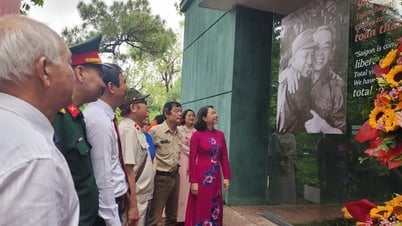

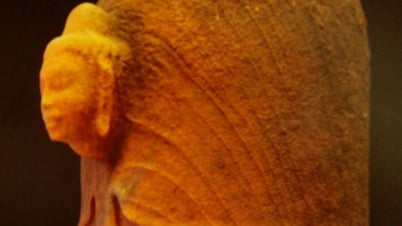





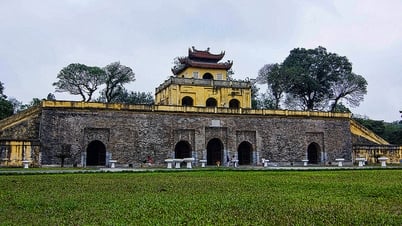






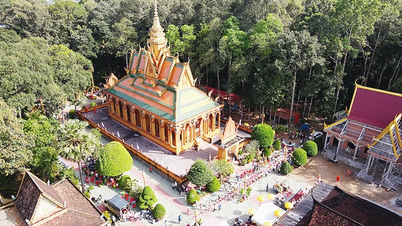







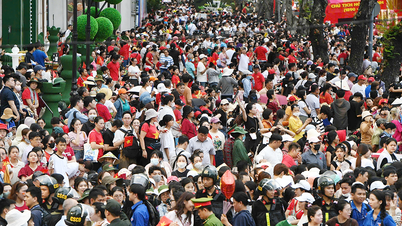

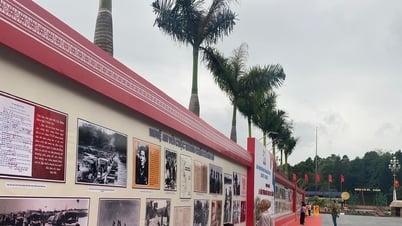
![[Photo] People choose places to watch the parade from noon on April 29](https://vphoto.vietnam.vn/thumb/1200x675/vietnam/resource/IMAGE/2025/4/29/3f7525d7a7154d839ff9154db2ecbb1b)






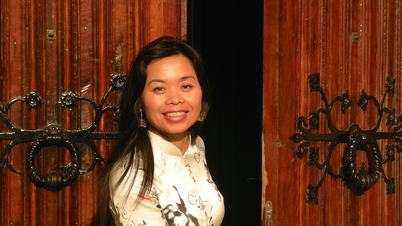



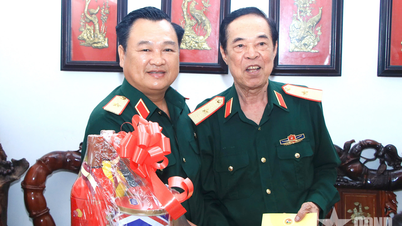
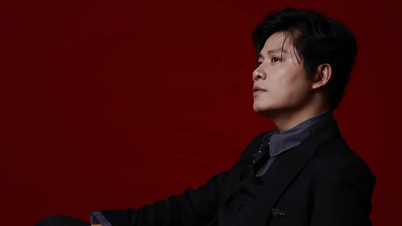













































Comment (0)